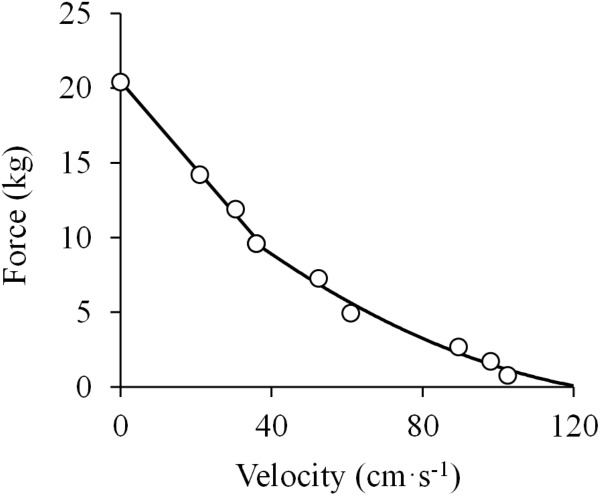FIGURE 4.
Force-velocity relationship. Data were obtained from Figure 1 in Ralston et al. (1949) using specialized software (ImageJ 1.51q8, NIH, United States). This modified version represents the force-velocity relationship of the in vivo human pectoralis major muscle. A linear function was fitted to the data above 40% of maximal isometric force (P0) (F = –0.29 × V + 20.43; R2 = 0.996) and a second order polynomial function was fitted to the data below 40% of P0 (F = 0.0008 ×V2 – 0.2335 ×V + 16.991; R2 = 0.983) (least squares method in both).

